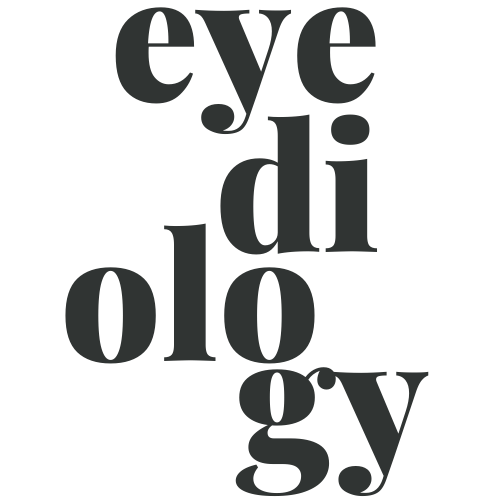Children’s Eye Examinations
Eye tests for children
Having poor eyesight at an early age can severely hinder your child’s development, failure to detect and correct any deficiencies in young eyes can often lead to even more serious problems in later life that would not be considered connected to eyesight.
All babies should have been screened at birth before leaving the hospital to make sure that their eyes are in good working order. A full eye examination should then be carried out when your child is three years old; this should be followed up with regular sight checkups due to the speed with which children grow.
Our optometrist would be more than happy to examine your child’s eyes, no matter how young they may be. Your child does not have to know the alphabet for the children’s sight test as we use an electronic eye test chart that uses various images to test your child’s vision
We also stock a full range of children’s fashion and designer glasses should you wish to upgrade. These frames coming in designs that are more comfortable, flexible and hard-wearing and for your child to wear.
There is also the option of having thinner, more lightweight and reflection-free lenses fitted, to further increase the quality of vision that your child can have. For older children we can also look into fitting contact lenses; these are an especially popular choice for children that are into sports such as football, tennis and rugby (please click here to see our contact lens page for more details).
Visual development in children
Up to 90% of what your child learns comes from what they see!
A new born child cannot see fine detail, at six months a baby’s vision has improved greatly, up to eight times better than at birth. At this stage they can make eye contact with you and will register you when you enter the room. Your child’s eyes will not fully develop until they are around six years old; unfortunately, the chances of correcting an undetected vision problem after the age of six becomes much more difficult.
Our eyes work in ‘stereo’, the brain processes the images received from each eye and then creates what we see as a 3D image. This adds depth to how we perceive our surroundings and enables us to judge distance more accurately.
The brain will ignore an image if what we see in one eye is out of focus, using mainly the clear image; this will hinder the perception of depth and in children will impact on the development of their hand-eye coordination, this in turn may hold back their performance in sport.
As a parent what should I watch out for?
A child should be examined immediately if they show the following typical symptoms to rule out any vision problems:-
- Gets frustrated when reading
- Closes or covers one eye
- Poor handwriting
- Screws up eyes or frowns to see
- Rubs eyes and blinks a lot
- Finds it difficult to copy words from the chalkboard
- Complains that things are blurry or hard to see
- Short attention span; gazes out of the window
- Frequently loses place when reading
- Skips words or whole lines of text
Eye conditions in children
A squint (Strabismus) is a condition that affects 3%-4% of children. In children, a squint can be completely corrected if detected early. Most of the time it can be corrected by just wearing spectacles. However, eye surgery may be required for certain types of squints.
As a young child poor vision in one eye can lead to a lazy eye (Ambylopia). This can lead to permanently poor vision if not corrected with spectacles in the critical early years of life. Lazy eyes affect 2% to 3% of children.
At the adolescent stage significant growth occurs and the eye changes in size. During these growth spurts the eye may be more prone to visual defects, so, frequent eye tests are key to detecting conditions early without it impacting a child’s education.
These conditions are more likely to be present in children if:-
- There is family history
- History of both parents wearing glasses from an early age
- Difficult, small or premature birth
To book your child’s eye examination on-line click here or call us on 020 7377 2020.
Strabismus is the condition in which a person is unable to align both eyes simultaneously under normal visual conditions (sometimes appearing as being “cross eyed”). Besides the obvious turning of an eye, the individual has reduced binocular function and stereopsis (depth perception) and may develop reduced vision in one eye (amblyopia). Strabismus has many different causes. The specific treatment depends on the specific type and cause. Strabismus can be treated at any age. Some factors favour younger patients, and compliance and motivation are more favourable with adults.
Treatment typically consists of prescription lenses and prisms and a program of vision therapy. In certain patients, surgery may be recommended in conjunction with vision therapy. Surgery may cosmetically straighten the eyes but does not typically improve visual function. The prognosis for optimal outcome in these cases is enhanced through pre-surgical and post surgical vision therapy. Whether constant or intermittent, strabismus always requires treatment. It rarely goes away by itself, and children do not outgrow it.
Amblyopia, more commonly known as “lazy eye,” is a condition manifested by reduced vision not correctable by glasses or contact lenses. It is not attributable to any apparent structural or pathological condition. It may be related to strabismus because a turned eye generally loses vision to some extent from disuse. Many patients with amblyopia may be unaware of the condition until they undergo a vision screening or a comprehensive vision examination. Amblyopia has many causes, and the treatment depends on the cause. In general, the treatment consists of the use of lenses and prisms in conjunction with a vision therapy program. Patching of the non amblyopic eye is of limited value unless it is part of an active vision therapy program. For many years amblyopia was thought only to be amenable to treatment during the critical period, up to age 7 or 8 years. Current research has demonstrated that effective treatment can take place at any age, but the length of the treatment period increases dramatically the longer the condition has existed before treatment. Research has demonstrated that patients with amblyopia are more likely to sustain injuries resulting in the loss of their good eye than individuals with two good eyes. Early childhood examinations are therefore essential.




